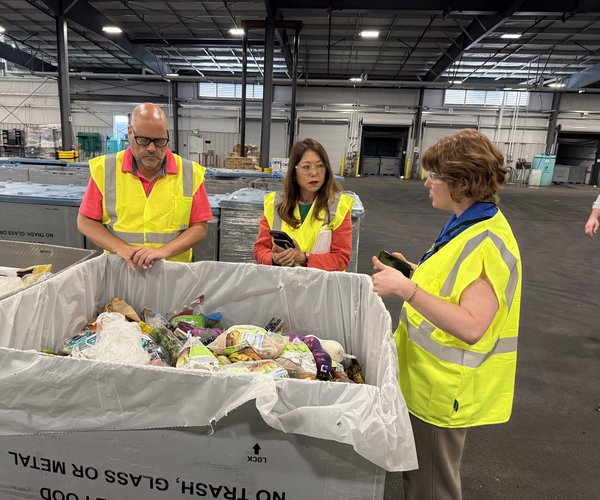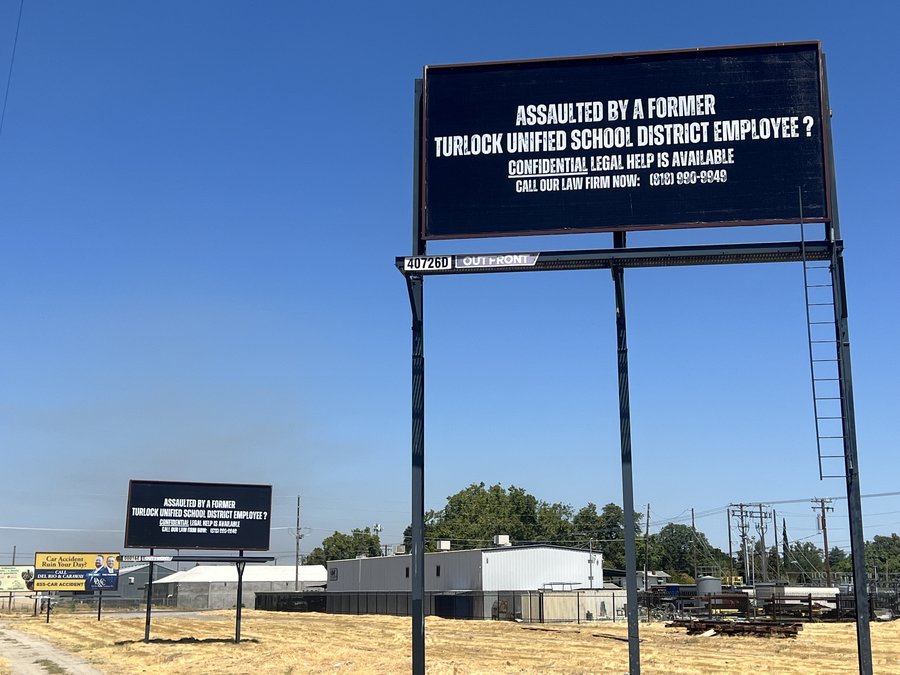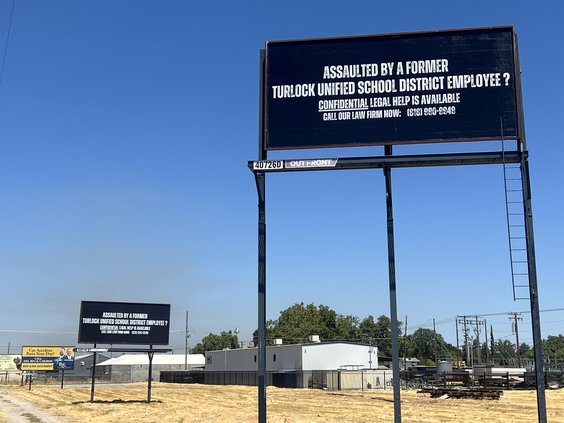As health officials from around the globe make preparations for the coronavirus to possibly reach the pandemic level, the California Department of Public Health stated the health risk to the general public in the state remains low.
As of Feb. 25, there are 10 cases — including two from separate repatriation flights — of COVID-19 novel coronavirus confirmed in California by CDC lab testing and approximately 200 persons have been tested to date in California, the CDPH reported.
Outbreaks of the coronavirus have surged recently in parts outside of China, including South Korea, Italy and Iran. There are more than 80,000 cases globally and there have been more than 2,700 deaths. U.S. health officials warned it's inevitable it will spread more widely in America.
“It’s not so much a question of if this will happen anymore, but rather more a question of exactly when this will happen — and how many people in this country will have severe illness,” said Dr. Nancy Messonnier of the U.S. Centers for Disease Control and Prevention.
The new virus comes from a large family of what are known as coronaviruses, some causing nothing worse than a cold, but others cause more serious illnesses such as SARS. It causes cold- and flu-like symptoms, including cough and fever, and in more severe cases, shortness of breath. It can worsen to pneumonia, which can be fatal. The Centers for Disease Control and Prevention stated that symptoms can appear as quick as two days and up to 14 days after exposure.
The viruses are common in many different species of animals, including camels, cattle, cats, and bats and it’s rare that animal coronaviruses can infect people and then spread between people, such as the case with this current coronavirus.
First detected in December, the virus is believed to have originated in a type of wild animal sold at a Wuhan, China market to be consumed as food.
The CDC said person-to-person spread occurs mainly via respiratory droplets from when an infected person coughs or sneezes, similar to how influenza and other respiratory pathogens spread. These droplets can land in the mouths or noses of people who are nearby or possibly be inhaled into the lungs. It’s currently unclear if a person can get the novel coronavirus by touching a surface or object that has the virus on it and then touching their own mouth, nose, or possibly their eyes.
In the United States and many other nations, public health officials are turning to guidelines written for pandemic flu and discussing the possibility of school closures, telecommuting and canceling events.
Countries could be doing even more: training hundreds of workers to trace the virus' spread from person to person and planning to commandeer entire hospital wards or even entire hospitals, said Dr. Bruce Aylward, the World Health Organization's envoy to China, briefing reporters Tuesday about lessons learned by the recently returned team of international scientists he led.
“Time is everything in this disease,” Aylward said. “Days make a difference with a disease like this.”
The U.S. National Institutes of Health's infectious disease chief, Dr. Anthony Fauci, said the world is “teetering very, very close” to a pandemic. He credits China's response for giving other nations some breathing room.
China locked down tens of millions of its citizens and other nations imposed travel restrictions, reducing the number of people who needed health checks or quarantines outside the Asian country.
It “gave us time to really brush off our pandemic preparedness plans and get ready for the kinds of things we have to do,” Fauci said. “And we’ve actually been quite successful because the travel-related cases, we’ve been able to identify, to isolate" and to track down those they came in contact with.
With no vaccine or medicine available yet, preparations are focused on what's called “social distancing” — limiting opportunities for people to gather and spread the virus.
That played out in Italy this week. With cases climbing, authorities cut short the popular Venice Carnival and closed down Milan's La Scala opera house. In Japan, Prime Minister Shinzo Abe called on companies to allow employees to work from home, while the Tokyo Marathon has been restricted to elite runners and other public events have been canceled.
In Africa, three-quarters of countries have a flu pandemic plan, but most are outdated, according to authors of a modeling study published last week in The Lancet medical journal. The slightly better news is that the African nations most connected to China by air travel — Egypt, Algeria and South Africa — also have the most prepared health systems on the continent.
Elsewhere, Thailand said it would establish special clinics to examine people with flu-like symptoms to detect infections early. Sri Lanka and Laos imposed price ceilings for face masks, while India restricted the export of personal protective equipment.
India's health ministry has been framing step-by-step instructions to deal with sustained transmissions that will be circulated to the 250,000 village councils that are the most basic unit of the country's sprawling administration.
Vietnam is using music videos on social media to reach the public. In Malaysia, loudspeakers on trucks blare information through the streets.
In Europe, portable pods set up at United Kingdom hospitals will be used to assess people suspected of infection while keeping them apart from others. France developed a quick test for the virus and has shared it with poorer nations. German authorities are stressing “sneezing etiquette” and Russia is screening people at airports, railway stations and those riding public transportation.
In the U.S., hospitals and emergency workers for years have practiced for a possible deadly, fast-spreading flu. Those drills helped the first hospitals to treat U.S. patients suffering from COVID-19, the disease caused by the virus.
Other hospitals are paying attention. The CDC has been talking to the American Hospital Association, which in turn communicates coronavirus news daily to its nearly 5,000 member hospitals. Hospitals are reviewing infection control measures, considering using telemedicine to keep potentially infectious patients from making unnecessary trips to the hospital and conserving dwindling supplies of masks and gloves.
What's more, the CDC has held 17 different calls reaching more than 11,000 companies and organizations, including stadiums, universities, faith leaders, retailers and large corporations. U.S. health authorities are talking to city, county and state health departments about being ready to cancel mass gathering events, close schools and take other steps.
The CDC's Messonnier said Tuesday she had contacted her children's school district to ask about plans for using internet-based education should schools need to close temporarily, as some did in 2009 during an outbreak of H1N1 flu. She encouraged American parents to do the same, and to ask their employers whether they'll be able to work from home.
"We want to make sure the American public is prepared," Messonnier said.
In the U.S., a vaccine candidate is inching closer to first-step safety studies in people, as Moderna Inc. has delivered test doses to Fauci's NIH institute. Some other companies say they have candidates that could begin testing in a few months. Still, even if those first safety studies show no red flags, specialists believe it would take at least a year to have something ready for widespread use. That’s longer than it took in 2009, during the H1N1 flu pandemic — because that time around, scientists only had to adjust regular flu vaccines, not start from scratch.
The head of the World Health Organization, Tedros Adhanom Ghebreyesus, said the U.N. health agency's team in China found the fatality rate between 2% and 4% in the hard-hit city of Wuhan, the virus' epicenter, and 0.7% elsewhere.
The world is “simply not ready,” said the WHO's Aylward. "It can get ready very fast, but the big shift has to be in the mindset.”
The California Department of Public Health has been prepared and is continuing with the following actions:
- Providing information about the outbreak and how to report suspect cases to local health departments and health care providers in California.
- Coordinating with federal authorities who plan to quarantine passengers returning to the U.S. from Hubei Province, China, through SFO and LAX.
- Assuring that health care providers know how to safely manage persons with possible novel coronavirus 2019 infection.
- Supporting hospitals and local public health laboratories for collection and shipment of specimens for testing at CDC for novel coronavirus 2019.
- Activating the Department of Public Health's Emergency Operations Center to coordinate response efforts across the state.
As with any virus, especially during the flu season, the Health Department reminds you there are a number of steps you can take to protect your health and those around you:
- Washing hands with soap and water.
- Avoiding touching eyes, nose or mouth with unwashed hands.
- Avoiding close contact with people who are sick are all ways to reduce the risk of infection with a number of different viruses.
- Staying away from work, school or other people if you become sick with respiratory symptoms like fever and cough.
The Associated Press contributed to this report.









